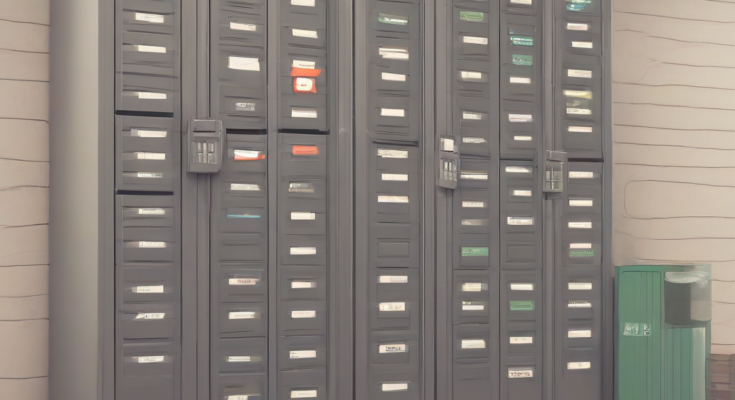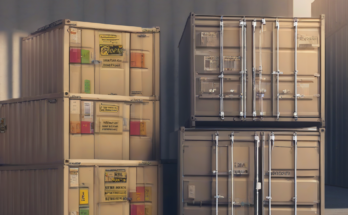Unlocking the Secrets to Finding the Cheapest Storage Unit: A Comprehensive Guide
Finding affordable storage can feel like a daunting task. With a plethora of options and varying pricing structures, navigating the world of self-storage can be overwhelming. This comprehensive guide will equip you with the knowledge and strategies to successfully find the cheapest storage unit that meets your specific needs.
Understanding Storage Unit Pricing: Factors That Influence Cost
Before diving into the search, understanding the factors that determine storage unit prices is crucial. These factors can significantly impact the overall cost, allowing you to make informed decisions and avoid unexpected expenses.
- Unit Size: The most obvious factor is the size of the unit. Smaller units are naturally cheaper than larger ones. Carefully assess your storage needs to avoid paying for unnecessary space.
- Location: Location plays a pivotal role in pricing. Units in densely populated urban areas or convenient locations tend to command higher rates compared to those in less accessible areas or smaller towns.
- Storage Facility Type: Different storage facilities offer various amenities and levels of security. Facilities with advanced security features, climate control, or other conveniences will generally be more expensive than basic options.
- Demand: Like any market, storage unit prices fluctuate based on demand. High demand periods, such as during moving seasons, often lead to increased prices.
- Lease Term: Longer lease terms often come with discounted rates. Consider your storage needs and explore options for longer-term contracts to potentially save money.
- Insurance: While not directly part of the rental fee, insurance costs should be factored into your budget. Some facilities require insurance, while others offer it as an optional add-on.
- Administrative Fees: Be aware of any administrative fees or other charges that may apply, such as late fees, early termination fees, or access fees.
Strategies for Finding the Cheapest Storage Unit
Now that you understand the pricing factors, let’s explore effective strategies to pinpoint the cheapest storage unit without compromising on quality or security.
1. Thorough Online Research:
- Utilize Storage Unit Comparison Websites: Leverage online platforms that compare prices and features from multiple storage facilities in your area. These websites often provide filters to refine your search based on size, location, and amenities.
- Check Facility Websites Directly: Once you’ve identified potential facilities, visit their individual websites for detailed pricing information and special offers.
- Read Online Reviews: Before committing to a facility, read online reviews from previous customers to gauge the quality of service, security measures, and overall customer satisfaction.
2. Negotiate and Compare Prices:
- Don’t Be Afraid to Negotiate: Many storage facilities are willing to negotiate rental rates, particularly if you’re committing to a longer lease term or if you’re comparing prices from multiple facilities. Politely inquire about potential discounts.
- Compare Prices Aggressively: Don’t settle for the first quote you receive. Obtain quotes from at least three different facilities to ensure you’re getting the best possible price.
- Ask About Promotions and Discounts: Inquire about any ongoing promotions, seasonal discounts, or special offers that might reduce the overall cost.
3. Consider Off-Season Rentals:
- Rent During Low Demand Periods: Avoid peak moving seasons (typically spring and summer) if possible, as rental rates are usually higher during these times. Consider renting during the off-season (fall and winter) to potentially secure a lower rate.
4. Explore Alternative Storage Options:
- Consider Smaller Units: Carefully evaluate your storage needs. Renting a smaller unit than initially planned can significantly reduce your monthly expenses.
- Utilize Friend or Family Storage: If feasible, explore the option of using storage space from trusted friends or family members. This can often be a cost-effective solution, especially for short-term storage needs.
- Explore Self-Storage Auctions: If you’re comfortable with the risks involved, consider attending self-storage auctions where abandoned units are sold. You could potentially find valuable items at a fraction of the cost, though there’s no guarantee of what you’ll find.
5. Prioritize Needs Over Wants:
- Focus on Essential Features: Determine the essential features you require from a storage unit (e.g., security, accessibility) and prioritize these over non-essential amenities (e.g., climate control, indoor access). This will help you identify cost-effective options that meet your fundamental requirements.
6. Read the Fine Print Carefully:
- Understand All Fees and Charges: Before signing a lease agreement, carefully review all fees and charges, including administrative fees, late fees, and early termination fees. Ensure you fully understand the terms and conditions to avoid unexpected expenses.
7. Leverage Seasonal Sales and Promotions:
- Stay Alert for Sales and Discounts: Many storage facilities offer seasonal sales or special promotions throughout the year. Keep an eye out for these opportunities to secure a discounted rental rate.
8. Check for First Month Free or Other Incentives:
- Inquire About Incentives: Some storage facilities offer incentives like a free first month’s rent to attract new customers. Don’t hesitate to inquire about such promotions.
9. Consider Long-Term Contracts:
- Negotiate Long-Term Rates: Committing to a longer-term lease agreement can often result in reduced monthly rental rates. This is a worthwhile strategy if you anticipate needing storage for an extended period.
10. Manage Your Belongings Effectively:
- Declutter Before Storing: Before you even start your search, declutter your belongings and get rid of anything you don’t need or use. This will minimize the amount of space you need and ultimately lower your storage costs.
Conclusion (omitted as per instructions)


